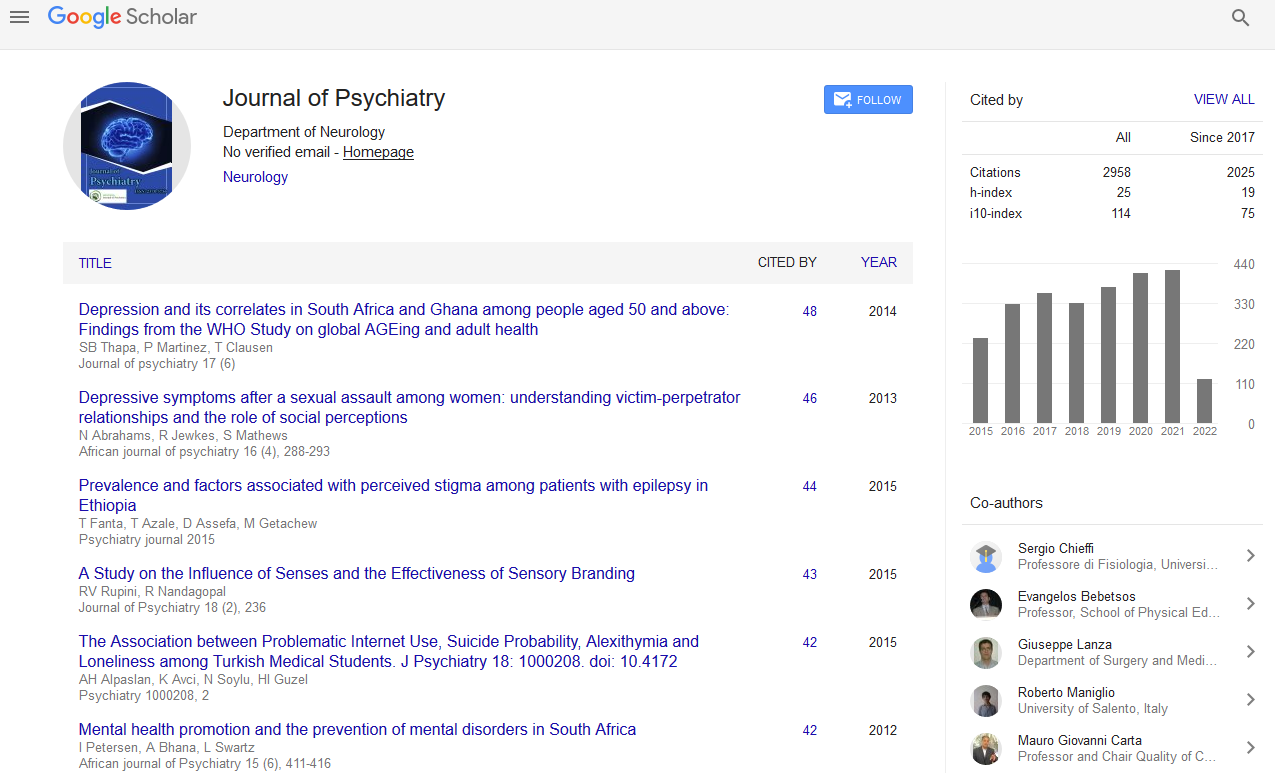PMC/PubMed Indexed Articles
Indexed In
- RefSeek
- Hamdard University
- EBSCO A-Z
- OCLC- WorldCat
- SWB online catalog
- Publons
- International committee of medical journals editors (ICMJE)
- Geneva Foundation for Medical Education and Research
Useful Links
Share This Page
Open Access Journals
- Agri and Aquaculture
- Biochemistry
- Bioinformatics & Systems Biology
- Business & Management
- Chemistry
- Clinical Sciences
- Engineering
- Food & Nutrition
- General Science
- Genetics & Molecular Biology
- Immunology & Microbiology
- Medical Sciences
- Neuroscience & Psychology
- Nursing & Health Care
- Pharmaceutical Sciences
Variations in PTSD characteristics among trauma-exposed urban black and non-black youth
28th World Congress on Psychiatry, Psychological Syndromes & Therapeutics
May 21-22, 2018 | New York, USA
Kevin Narine, Noah Suzuki, Rebecca Yeh and Anu Asnaani
University of Pennsylvania, USA
Posters & Accepted Abstracts: J Psychiatry
Abstract:
Background: Trauma exposure is a common occurrence among urban children and adolescents. To date, few studies have examined comparative data on the prevalence and effects of trauma-related distress among trauma-exposed Black youth. The purpose of this study was to investigate the association between trauma exposure attributes such as index trauma type and post-traumatic stress disorder (PTSD) symptom clusters, and sociodemographic characteristics such as race and gender using the Child PTSD Symptom Scale for DSM-5 (CPSS-5). Method: The study included 64 children and adolescents (29.7% White, 45.3% Black, 14.1% Hispanic/Latino, and 9.4% biracial) between the ages of 8-18 years who had experienced a DSM-5 Criterion A trauma. The participants completed the interviewer version of the CPSS-five in community sites and clinics, as part of a larger psychometric study of the CPSS-5. Analysis: A Chi-square test with post hoc comparisons was used to determine whether gender and racial minority status were related to type of trauma. PTSD cluster symptom scores were subjected to a one way analysis of variance (ANOVA) with race or gender status, and a two way analysis of variance (ANOVA) for the interaction effects of gender and racial status. Results: Black youth less frequently endorsed index traumas involving serious injury or death than non-black youth (4.2% vs. 26.5%, �?2=12.135, p<0.033). Black youth also endorsed lower levels of reexperiencing symptoms (3.75 vs 6.03, F(1, 56)=4.40, p<0.04) and fewer difficulties with anhedonia, attention, and sleep (all p-values<0.028) than non-Black youth. In addition, there were no significant interaction effects between race and gender with PTSD cluster symptoms. Trauma-exposed black youth also reported significantly less life interference from PTSD symptoms when doing chores and duties at home, hobbies, and schoolwork (all p-values<0.047). There was no significant difference in all other variables tested. Conclusions: The results suggest that Black youth are possibly more resilient than non-Black youth after exposure to trauma. Black youth may have unique protective factors to cope with traumatic distress and experience fewer PTSD symptoms and life interference. Future studies should examine the specific sociocultural factors that may influence resilience in Black youth after traumatic experiences knarine@sas.upenn.edu


